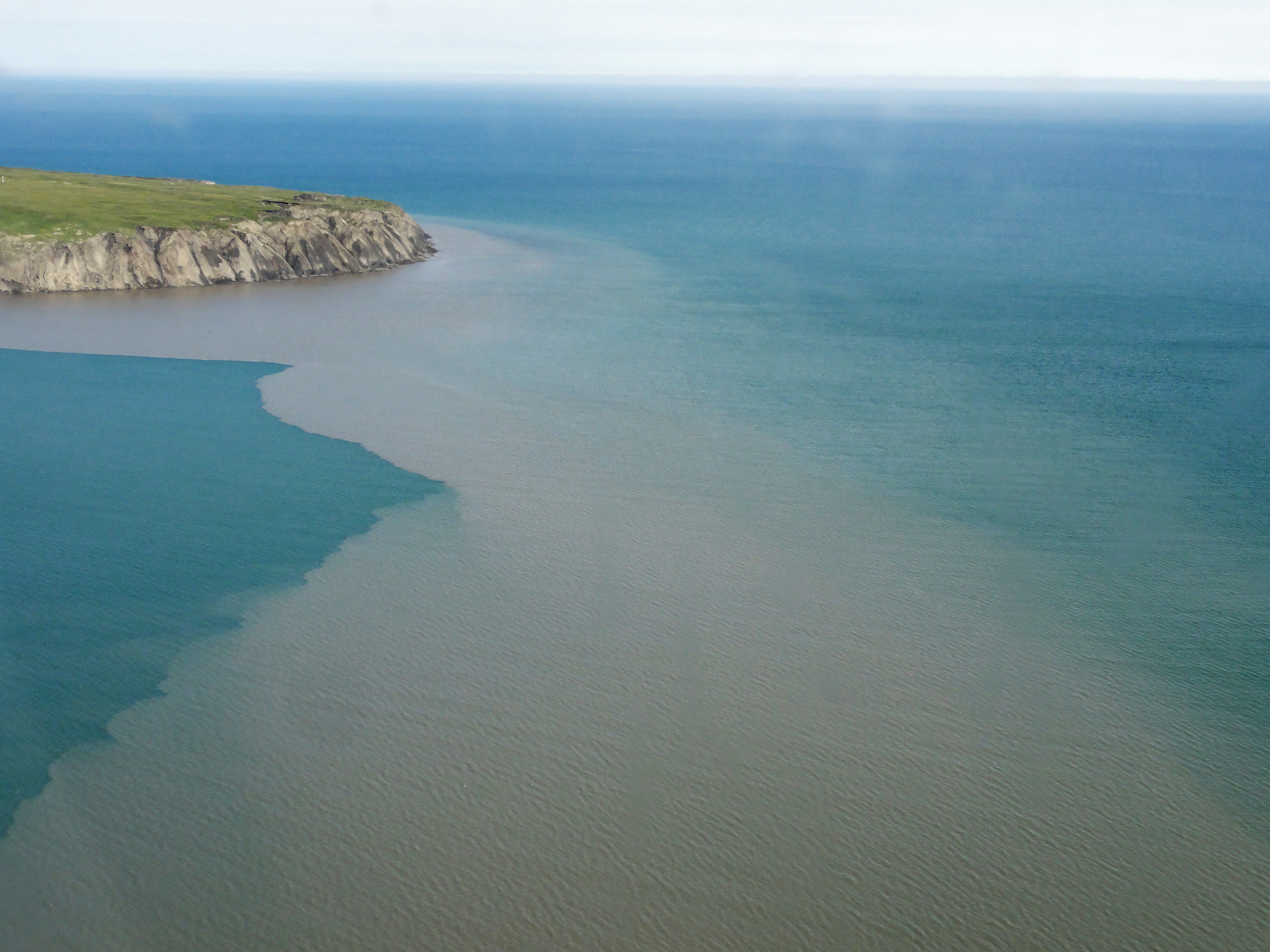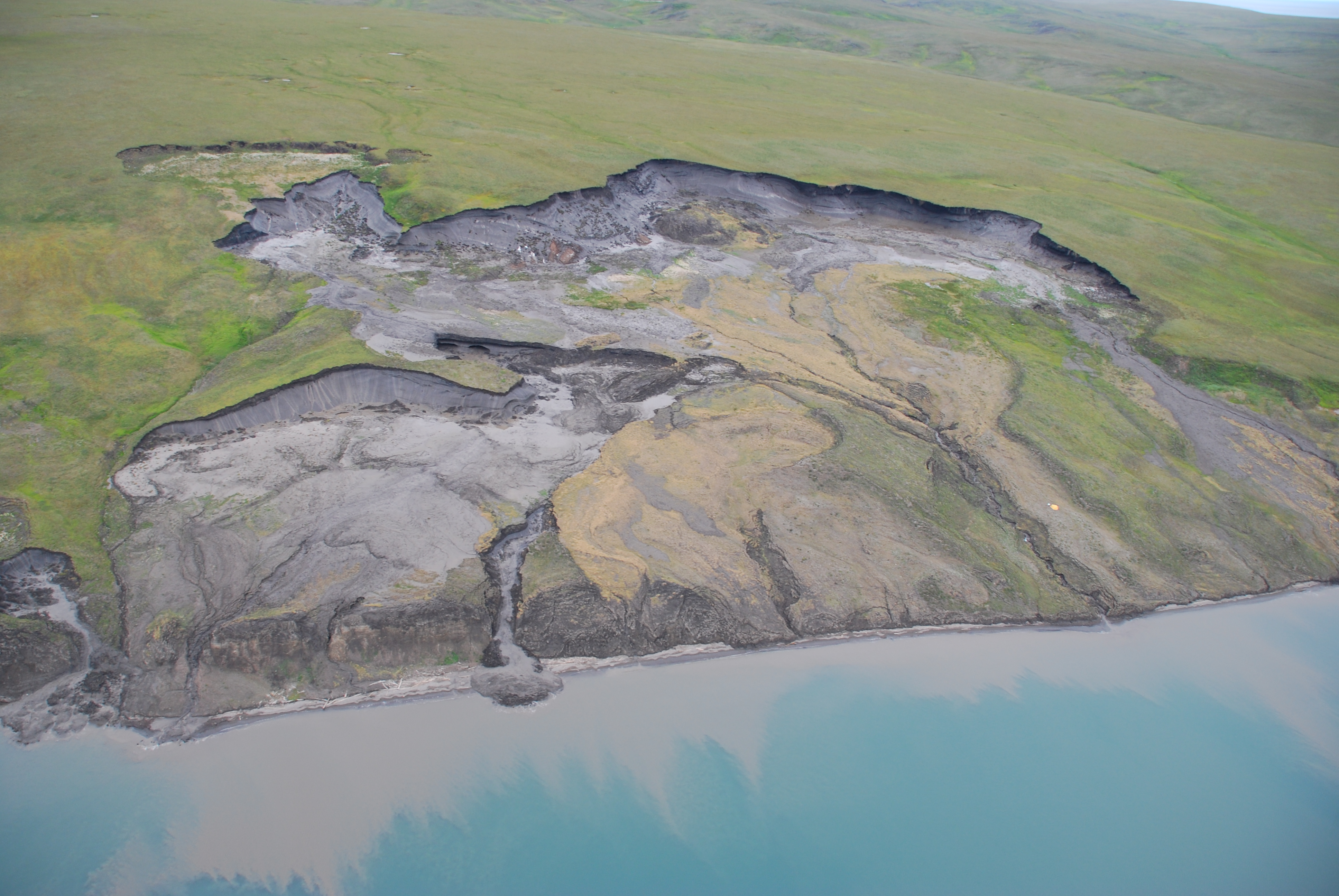The coast around the Arctic Ocean consists mostly of permafrost, which contains large amounts of millennia‐old organic carbon. Due to rising temperatures, this old organic carbon is released to the Arctic Ocean at an increased rate by permafrost thaw and coastal erosion. Once released, organic carbon can be degraded and emitted as greenhouse gas to the atmosphere, or it can be stored away in marine sediments.

This study was published in Geophysical Research Letters, and was led by Dirk Jong from Vrije Universiteit Amsterdam and colleagues Jorien Vonk, Lisa Bröder, George Tanski, together with Nunataryuk partners Michael Fritz and Hugues Lantuit from the Alfred Wegener Institute in Potsdam, Germany.
Jong and colleagues found that the old organic carbon quickly settles after release into the ocean and is buried in sediments close to shore, whereas the overlying sea water is dominated by young organic carbon from other sources than permafrost. However, sediments close to shore can be reworked by waves and currents, releasing the organic carbon again. This makes the zone closest to shore an important research area to assess the impact of thawing permafrost on climate.
This nice piece of research will help in creating carbon budgets for the Arctic nearshore zone, which is one of the main goals in Work Package 2 - Coastal Permafrost.

Here is the abstract:
Collapse of permafrost coasts delivers large quantities of particulate organic carbon (POC) to Arctic coastal areas. With rapidly changing environmental conditions, sediment and organic carbon (OC) mobilization and transport pathways are also changing. Here, we assess the sources and sinks of POC in the highly dynamic nearshore zone of Herschel Island‐Qikiqtaruk (Yukon, Canada). Our results show that POC concentrations sharply decrease, from 15.9 to 0.3 mg L−1, within the first 100–300 m offshore. Simultaneously, radiocarbon ages of POC drop from 16,400 to 3,600 14C years, indicating rapid settling of old permafrost POC to underlying sediments. This suggests that permafrost OC is, apart from a very narrow resuspension zone (<5 m water depth), predominantly deposited in nearshore sediments. While long‐term storage of permafrost OC in marine sediments potentially limits biodegradation and its subsequent release as greenhouse gas, resuspension of fine‐grained, OC‐rich sediments in the nearshore zone potentially enhances OC turnover.


